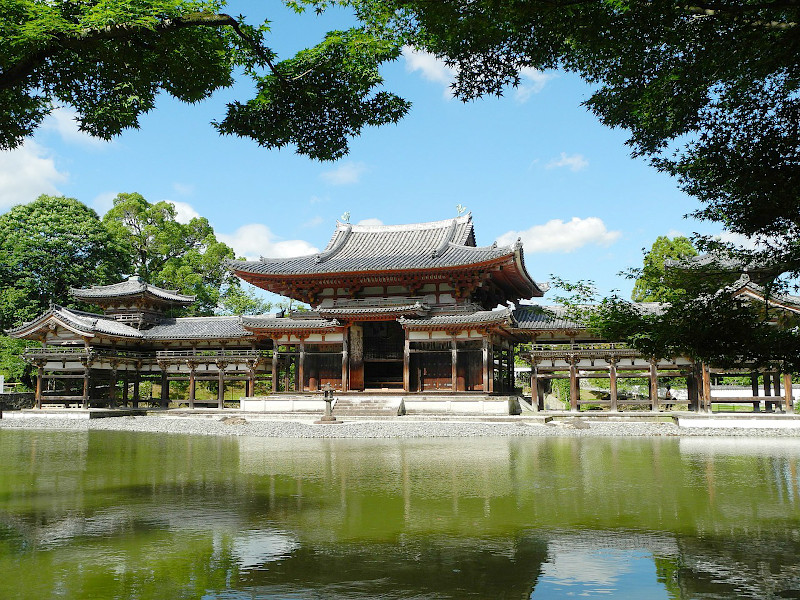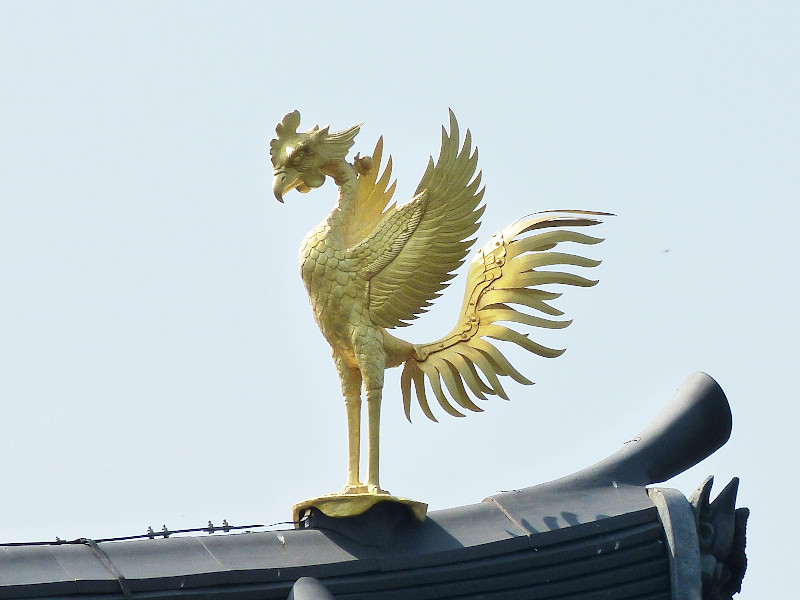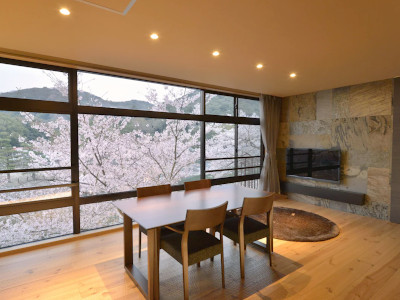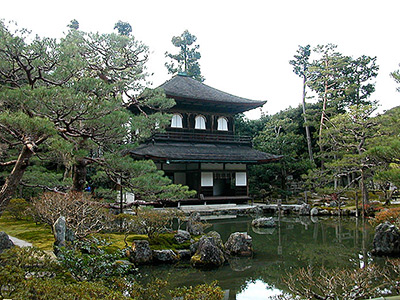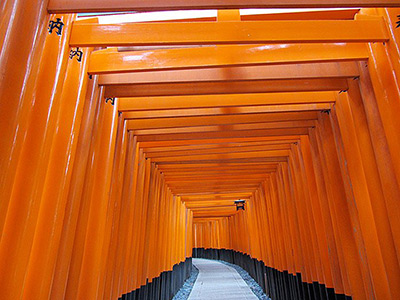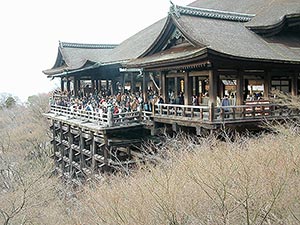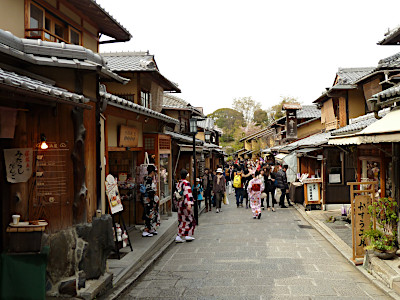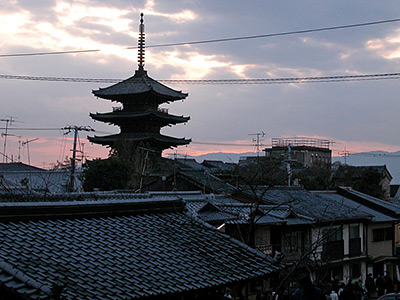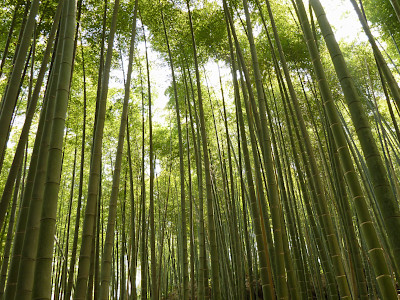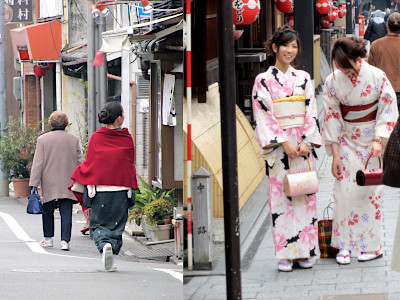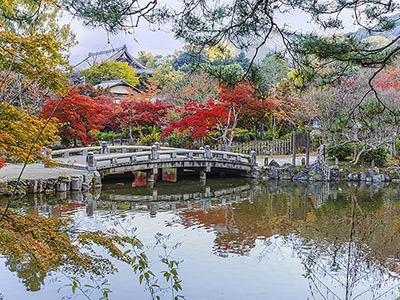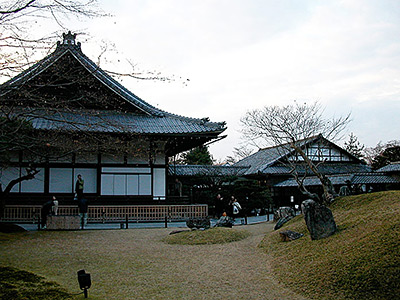Byodo-in Temple in Uji
This post can contain affiliate links, which means that we may receive a small commission if you make a purchase using these links.
Facts & Figures
If you are interested in ancient Japanese architecture, then the Byodo-in Temple in the small town of Uji is worth visiting. The Buddhist temple is often labeled as one of the most beautiful buildings in Japan and is categorized as a Japanese National Treasure and a UNESCO World Heritage Site. The Byodo-in Temple is a striking representation of Buddhist Pure Land or Jodo architecture.
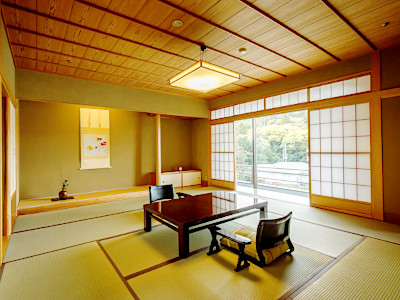 Discover Uji’s Best Ryokans >
The large, beautiful, and outstanding Phoenix Hall (Hoo-do) is one of the only remnants of architecture from the Heian Period, which lasted from 794 to 1185. This region, where the temple is located, was a popular living area among aristocrats and elites who wanted to escape the buzz of Kyoto. Originally, the temple was dedicated to the Buddhist Amitabha, whose philosophy was to welcome every practicing Buddhist to the temple, regardless of which branch of Buddhism the individual practiced. This explains why the temple was given the name Byodo, which means equal in every way. Today, this site is a joint Todo and Tendai temple. Btw the Phoenix Hall has been displayed on the Japanese 10 yen coin since 1951.
Discover Uji’s Best Ryokans >
The large, beautiful, and outstanding Phoenix Hall (Hoo-do) is one of the only remnants of architecture from the Heian Period, which lasted from 794 to 1185. This region, where the temple is located, was a popular living area among aristocrats and elites who wanted to escape the buzz of Kyoto. Originally, the temple was dedicated to the Buddhist Amitabha, whose philosophy was to welcome every practicing Buddhist to the temple, regardless of which branch of Buddhism the individual practiced. This explains why the temple was given the name Byodo, which means equal in every way. Today, this site is a joint Todo and Tendai temple. Btw the Phoenix Hall has been displayed on the Japanese 10 yen coin since 1951.
- Byodo-in Temple:
- Opening Hours - 8:30 am to 5:30 pm
- Closed - never, open the whole year
- Admission Fee - 600 yen (Adults) + 300 yen for the Phoenix Hall tour
- Treasure House (Hoshokan Museum):
- Opening Hours - 9:00 am to 5:00 pm (last entry 4:45 pm)
- Closed - never, open the whole year
- Admission Fee - see above
My tips for local activities
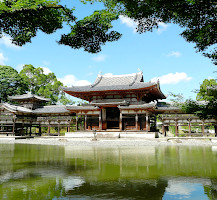
Explore the best parts of the historic town Uji and Byodo-in Temple, a UNESCO World Heritage Site, with a local guide. The tour takes approximately 3 hours. For more details check out this page >
History
The origin of the temple was a villa built in 998 and owned by Japanese courtier and poet Minamoto no Shigenobu. Later the Byodo-in Buddhist temple in Uji was established in 1052 by a revered regent with the name Fujiwara no Yorimichi (992 - 1074). He was a respected leader of the Fujiwara Clan, which was one of the most powerful clans in Japan as it dominated most of the top governmental posts during the Heian Period (794 - 1185). The temple was built on one of the family estates, which perhaps helps to explain the opulent structure and design of the buildings. In 1053 the Phoenix Hall (Hoo-do) was added to the property. The Byodo-in Buddhist temple was significant to the local community because it allowed the spread of the Buddhist religion further into the rural communities. During the centuries the temple burned down many times, like in a civil war in 1336, but luckily the Phoenix Hall (Hoo-do) was never affected. The Amida Buddha statue and the Phoenix Hall were recognized as National Treasures in 1951. The temple got its status as a UNESCO World Heritage Site in 1994. The huge treasure house was rebuilt in 2001 and a large renovation of Byodo-in was finalised in 2014.
Location

Byodo-in Temple, also known as Heiankyo in the old days, is located in the small town of Uji, which is fifteen kilometers south of Kyoto and near Nara.
Address: Renge-116, Uji, Kyoto Prefecture 611-0021
How to get to Byodo-in Temple?
- 20min from Kyoto to Uji Station by JR Nara line and
- 12min from Uji Station to Byodo-in Temple
Sightseeing spots at the Byodo-in temple grounds
Top:
Kannon-do Hall - The hall, an Important Cultural Property, is known for its eleven-faced wooden statue. Kannon-do dates back to 1230 (Kamakura Period, 1185 - 1333).
Phoenix Hall (Hoo-do) - The building, constructed in 1053, is 47 meters in length and 13.5 meters tall. The Phoenix Hall, which is surrounded by the Aji-ike pond, faces the east, traditionally the direction of Amida’s Pure Land paradise. The hall became a model for many subsequent Amida temples and Pure Land gardens across Japan. Look out for the two phoenix statues on its roof. These are Chinese phoenixes, called hoo in Japanese. Now you know where the name comes from.
Statue of Amida Nyorai - Within the Phoenix Hall, you will find this massive 2.4-meter-high wooden statue covered in gold leaf. It is surrounded by sculptures of 52 of his followers. This magnificent work was done by the priest, artist, and master sculptor Jocho (988 – 1057).
Treasure House (Hoshokan Museum) - The house was built in 2001. It is constructed mostly underground and full of designated Important Cultural Properties and National Treasures, like the Bronze sculpture of a Phoenix, Unchu Kuyo Bodhisattva statue (Buddhist saints holding a mass in the clouds), and Bonshou (temple bells). You will also get information about the history of the temple.
Jodo-Shiki teien - It is a typical Pure Land garden that consists of an Amida-do (Hoo-do) hall and a pond. Jodo-Shiki teien is one of the oldest and best examples of gardens created during the Heian period (794 - 1185) and has the status of a National Historic and Scenic Beauty Site. The garden is one of the only few in the world that has managed to maintain its immaculate condition.
Tea Room Toka - Uji is famous for its high-quality green tea. Enjoy a cup of green tea at this salon near the temple.
Festival & Events in Uji(dates can change without notice)
August
Uji Fireworks Festival (middle of August)
You will have the best view from the Furitsu Uji Park. Enjoy more than 7000 fireworks with 70 different shots, when they light up the clear sky.
October
Uji Tea Festival (first Sunday in October)
The Uji Tea Festival has been held for over 80 years. The reason for the festival is to pray for the continued prosperity of Ujicha and to celebrate the three great men who introduced and developed the tea industry of Uji. They are Zen Master Eisai who brought the first tea seeds from China, High Priest Myoe who planted the seeds at Uji, and Rikyu Sen who pursued the art of tea ceremony.

